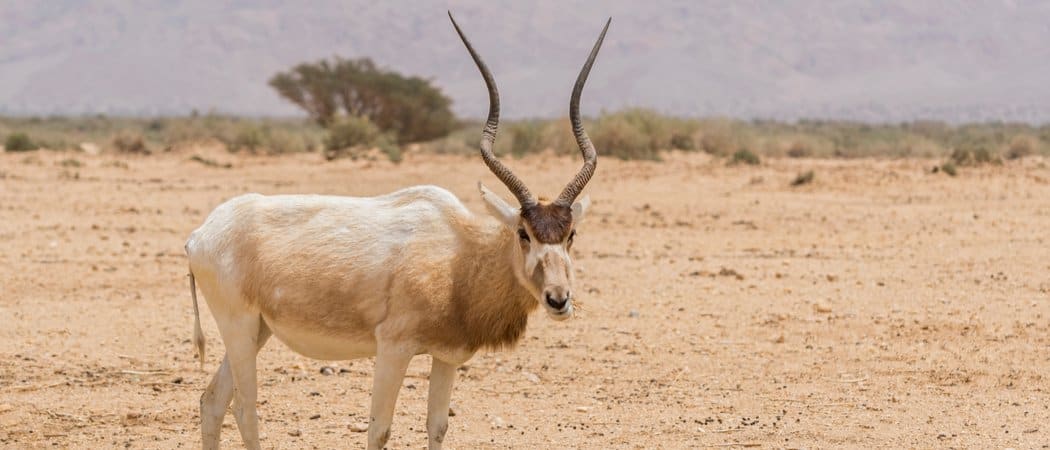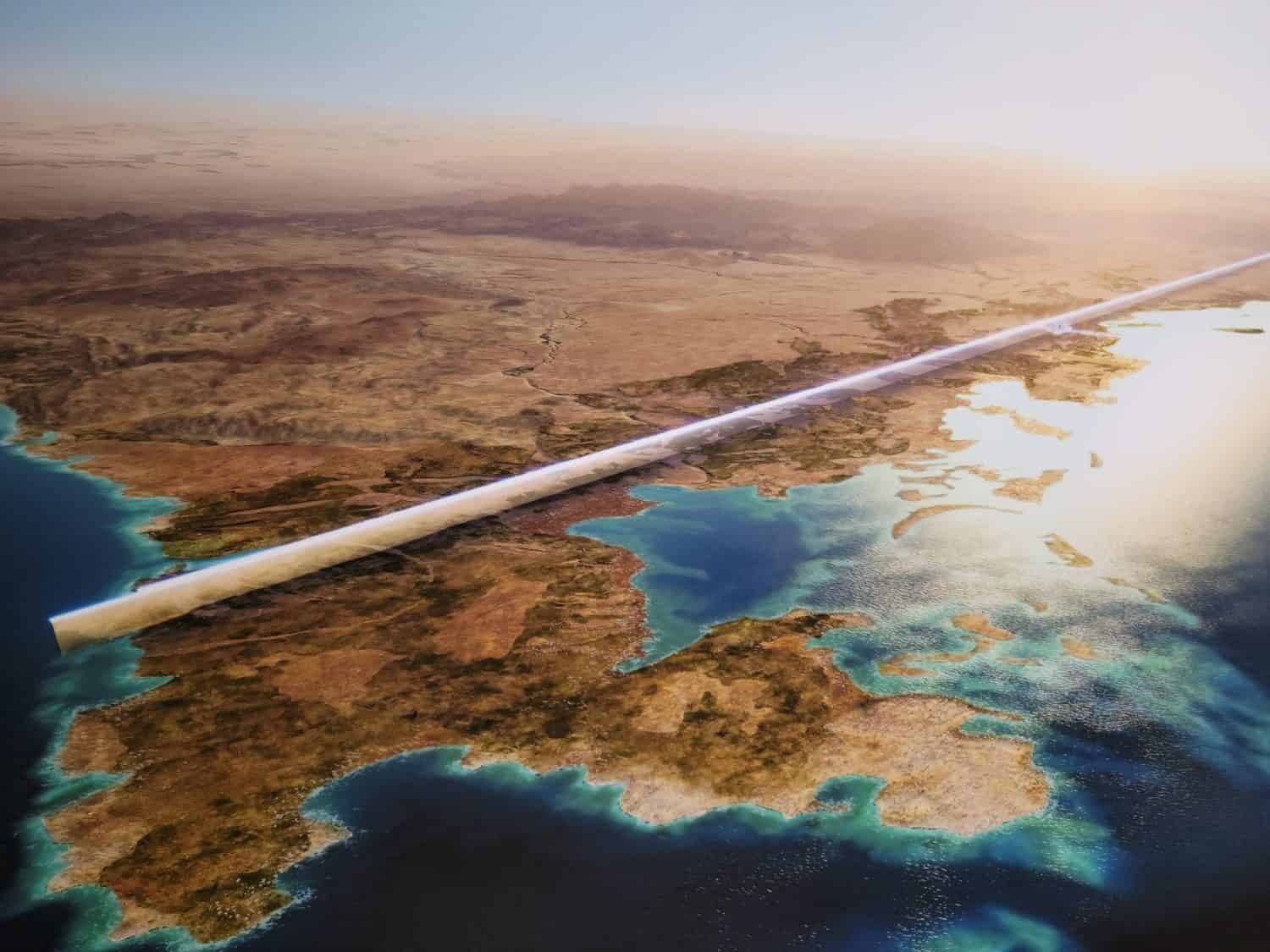The Sahara is the largest “hot” desert in the world, not counting the “cold” deserts of the Arctic and Antarctic. It covers all or part of 11 North African countries, from the Atlantic Ocean to the Red Sea. It hasn’t always been a desert, though. The climate of the Sahara has shifted throughout history, on about a 20,000-year cycle, alternating between desert and grasslands.
But why wait thousands of years for the next cycle? What if humans could alter the North African climate and turn the desert green again? And what if we did that by flooding the Sahara with seawater to create one or more Saharan Seas? We discuss these possibilities below.
What’s the Problem With the Sahara?

The Sahara is beautiful, in a deadly, other-worldly sort of way.
©skander zarrad/ via Getty Images
Sandy and Hot
The Sahara Desert is already a sea of sorts: a sea of sand. Rippling dunes slowly move over the landscape, blown by hot desert winds. In the summer, average highs stay around 104 °F but have soared to 136 °F, the hottest temperature ever recorded on the planet. Massive dust storms in the desert are visible from space. The particles can go so high into the atmosphere that unlike the prevailing west-to-east winds at lower levels, they actually go the other direction and rain fine particles of dust down on the ocean, the Caribbean Sea, and South America.
Unpopulated
Archaeology reveals that in climatically better times, the region teamed with life and human settlements. Today only 2.5 million people (a little more than the population of Houston) are scattered across an area about the same size as the continental United States. Many of them are nomadic people living precariously close to basic subsistence levels. Central Saharan countries are among the poorest in the world. Their cultures are quite interesting and unique. For example, the Tuareg nomads have a matriarchal social structure, uncommon among people groups of the area.
Getting Bigger
Studies show the Sahara is getting bigger. Climate change and population pressure are creating desertification in the Sahel, the semi-arid region to the south of the desert. This threatens to displace millions of people and destroy critical wildlife habitats as the desert expands.
So How About Flooding the Sahara?

Flooding the Chott el Djerid would create a saltwater lake larger than Rhode Island.
©Leonid Andronov/Shutterstock.com
Some areas of the Sahara Desert are deep basins that are well below sea level. Examples include the El Djouf basin (Mauritania), the chotts of Tunisia, and the Qattara Depression (Egypt). If canals or tunnels were excavated to one or more of these, seawater would flood in, creating large saltwater lakes.
This idea was first proposed in the 19th century and periodically resurfaces every few decades. In the 1960s there were even proposals through the American Project Plowshare to use nuclear explosions to blast away the tons of sediment that would have to be excavated to build the canals. As recently as 2018, the Tunisian government approved a serious study of flooding basins in the south of their country. If the project goes forward, the Chott el Djerid would be flooded, creating a saltwater lake bigger than Rhode Island.
Life Around New Saharan Seas

New lakes in the Sahara might team with trade and habitation like the banks of the Nile.
©iStock.com/Givaga
Is there any real benefit to creating one or more saltwater lakes in the Sahara Desert? As a matter of fact, yes, there are some concrete improvements these projects might make to people’s lives in the affected countries:
- In the desert heat, large bodies of water would constantly evaporate, creating cloud cover and rainfall in the surrounding regions. This could make agriculture possible.
- Ships could navigate far into the interior, bringing trade to previously inaccessible areas.
- Marine life migrating into the new seas via the canals would have new habitats to expand into and would provide a food and income source to people settling around the new seas.
- Higher humidity could help mitigate the effects of sandstorms in the immediate area.
- The new seas would contain some of the water from melting glaciers and ice caps, reducing the global sea level rise a bit.
- Increased vegetation growing in the desert would help remove carbon from the atmosphere. Unlike deserts, forests act as “carbon sinks” to remove carbon dioxide from the air, lock it into their trunks, roots, and leaves, and keep it there when they die.
Not So Fast . . .

The addax is a critically endangered species in the Sahara. Only 200 or so remain in the wild.
©Cezary Wojtkowski/Shutterstock.com
Don’t start packing your surfboard just yet. There are some very good reasons not to flood the Sahara:
- Desert wildlife, including endangered species like the addax, could be decimated by radical alterations in the climate and flora, a larger human population, and the spread of agriculture.
- Saharan dust contains nutrients that nourish marine life in the Atlantic and Mediterranean and even fertilize the Amazon. Substantial reduction in dust storms would be detrimental to plant and animal life in all those areas.
- It is not clear that evaporation would create enough rainfall in the right places to sustain large numbers of people and agriculture in the surrounding desert. These seas could just become swampy lifeless saltwater flats. Large-scale, expensive desalinization projects might be necessary so people could live there.
- Major alterations to weather patterns could have unpredictable results on neighboring regions. What if it caused new deserts to emerge in southern Europe, for example?
- If global warming continues unabated, the temperature could still simply become too hot to make the region inhabitable. In these conditions, it would be wiser to invest in moving people away from the Equator, rather than moving more people toward it.
Saharan Wildlife

The desert
hedgehog
is one of the cuter species that makes its home in the Sahara.
©vaeenma/iStock via Getty Images
Even though the Sahara Desert might seem like a lifeless wasteland, that’s not really the case. The creatures that live there are well-adapted to their habitat. The region has about 500 species of plants, 70 mammal species, 90 bird species, 100 reptile species, and countless spiders, scorpions, and insects. Migratory birds fly back and forth between Europe and Africa via the Sahara. These are some examples of the species found in various parts of the region where conditions permit:
- Mammals: jerboa, Cape hare, Anubis baboon, gerbil, dorcas gazelle, dama deer, spotted hyena, mongoose, Libyan striped weasel.
- Birds: ostrich, barn owls, larks, guinea fowl, secretary birds, eagle owls, martins.
- Reptiles: lizards, cobras, skinks, chameleons, crocodiles.
Flawed Assumptions

Adventure tourists bring critical income to Saharan countries.
©DavideAngelini/Shutterstock.com
Large-scale geoengineering projects like flooding the Sahara have some fundamental flaws. They’re often rooted in an underlying assumption that every part of the world should be a place of human habitation, even if standards of living are unsustainable. They also assume technology can fix everything. A world littered with failed projects and environmental damage argues otherwise.
An alternative way to look at the Sahara is that it’s not bad for it to remain a wilderness. The current tribes living there have been adjusted to desert life for thousands of years. The environment can sustain their lifestyle and numbers. Things often work out better in the long run when people adjust to their environment rather than forcing the environment to adjust to them.
An Alternative Approach

The Line is a 110-mile long linear city currently under construction in Saudi Arabia.
©choi yurim/Shutterstock.com
A different approach to housing people in the desert is Saudi Arabia’s “The Line” – a linear city designed to house nine million people in the desert in modern living conditions. Currently under construction and projected to cost $500 billion, the city will be a 110-mile-long megastructure. It, too, has environmental problems, not the least of which is that it will function as a huge barrier to any species attempting to migrate around it. Nevertheless, it may be on the right track in terms of how to house large numbers of people compactly, rather than spreading them across a large landscape that would have to be altered to accommodate them.
The photo featured at the top of this post is © Pascale Gueret/Shutterstock.com
Thank you for reading! Have some feedback for us? Contact the AZ Animals editorial team.






